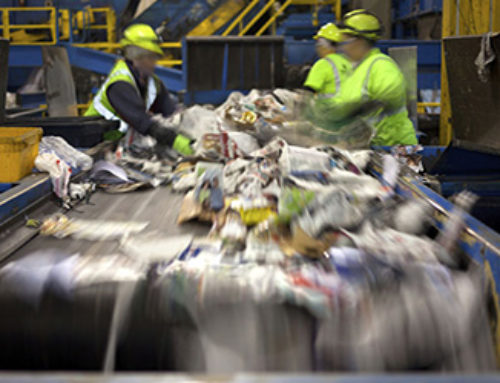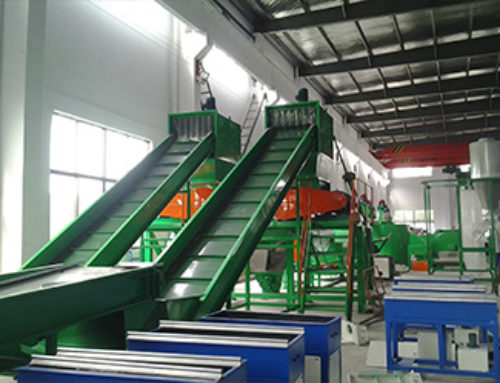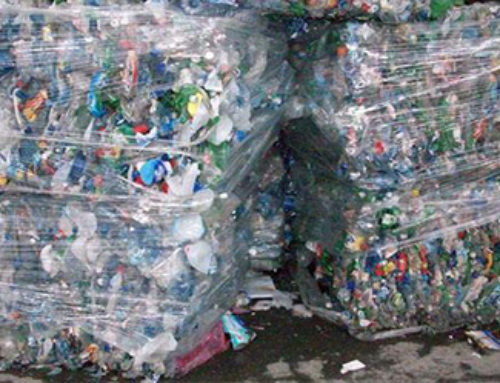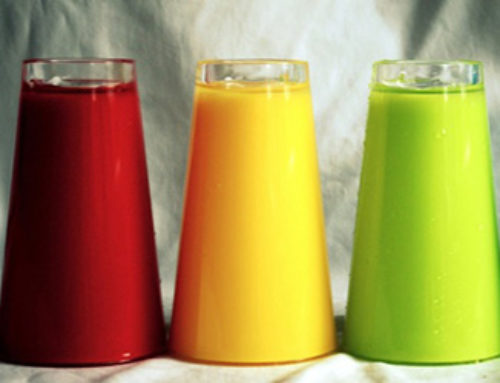An increasing number of Americans have access to curbside recycling, and consumer and community education programs are spreading the message about the benefits of recycling. Despite these efforts, recycling rates in the United States are still very low. According to the National Association for PET Container Resources (NAPCOR) and the Association of Post consumer Plastics Recyclers (APR), the American PET recycling rate in 2008 was 27%. However, recycling rates in Canada range from 60-80% depending on the province.
Recycling of all plastics, including PET, is an important component of sustainability and something that we strongly encourage and support. The National Recycling Coalition cites PET plastic bottles (washing line) as one of the top products to recycle because they are 100% recyclable.
How does PET plastic (recycling machinery) become a new product? It’s a four step process that begins with you!
In order to give birth to a new product, used PET containers must first be properly disposed of by companies or individuals for waste plastic recycling collection.
The collected PET bottles (recycling machine) are then sent to a sorting plant where objects are separated according to their materials. Recovered PET bottles (recycle machine) are compacted into a bundle and are sent to a reclaimer – the factory that turns used bottles into PET flakes (washing line).
The first thing the reclaimer has to do is de-bale the bundles and re-sort the material to make sure the final product will be as pure as possible. The de-baled bundles are then pre-washed and shredded into flakes. The flakes are again washed, dried, and then stocked and sold.
The real recycling starts when the solid flakes, the raw material, are used to manufacture a new product. Recycled PET bottles (recycling line) can be turned into polyester fibers, which are used as a base for products such as fleece coats, clothing, pillows and carpets. PET can also be recycled back into new, single-serve PET bottles (washing line) that are convenient, safe and recyclable.
Information provided above is courtesy of the National Association for PET Container Resources (NAPCOR) and PET Containers Recycling Europe (PETcore).
Get involved
Recycling is an important step towards improving the environment and reducing our carbon footprint. Facts on PET encourages you to recycle all eligible products at home, in the office and throughout your community. We urge you to share this information with family, friends and community leaders to spark discussions about the importance of environmental sustainability through better municipal recycling services and consumer practices. What we do today will have a lasting impact on generations to come.
The National Association for PET Container Resources (NAPCOR) suggests the following steps for creating a successful PET recycling program. These steps will help to ensure an efficient and effective PET collection program at work, in your community or at home:
Appoint a program coordinator to be responsible for implementing and overseeing the program. The program coordinator should also recruit support as needed.
Conduct a PET plastic bottles (recycling machinery) assessment. How many PET bottles (washing line) are used or sold on the premises? What other materials are currently recycled at your organization? Where are most of the PET bottles (washing machine) consumed and discarded?
Learn how to identify the recyclable materials you throw away and teach everyone in your family or organization how to locate recycling codes.
Get your clubs and organizations involved. Make sure there is access to a recycling bin and coordinate with your waste service provider to recycle as much as possible.
If recycling is not available in your neighborhood, contact your waste service provider and local government and show your support for expanded services.
Monitor and evaluate the program. Stay in close contact with participants. Respond quickly to the “bugs” in your system. Evaluate the collection system often to ensure its effectiveness.





